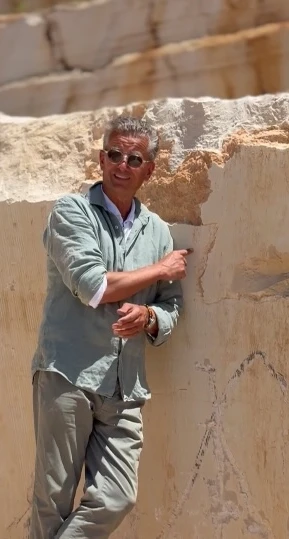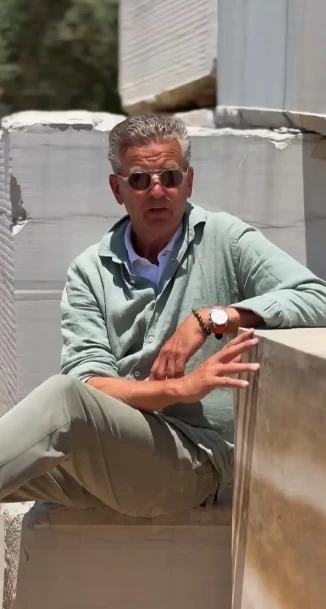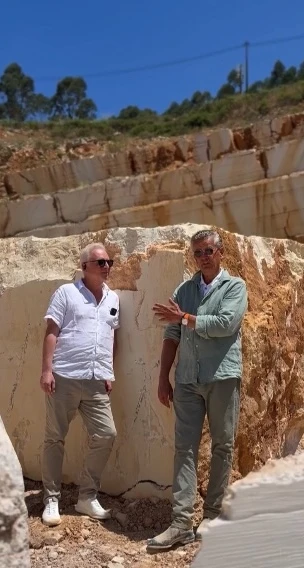


I was recently in Portugal. Not for surfing – although we were very close to Nazaré, the famous surf mecca. Rather, searching for the perfect stone for our Mediterranean projects.
We found it in Moleanos, a small town on the Portuguese Atlantic coast. Here, the family business Farpedra has operated one of Europe's leading quarries for high-quality limestone for generations.
Not every natural stone is suitable for every project. The choice of material determines durability, aesthetics, and sustainability.
Limestone is not just limestone. These sedimentary rocks formed over 165 million years from deposits of corals, shellfish, and algae in primordial seas. Each block tells the story of an entire ocean.
What we seek: elegant, timeless stones with a warm character – in our case, a beige to gray Moleanos with vibrant structure. Ideal for large, heavy slabs and fine craftsmanship. Perfect for Mediterranean installations that should endure for decades – better yet: centuries.
Why do we travel 3,000 kilometers for stones? Because this limestone brings qualities that no industrially manufactured material can offer. It's not granite – equally hard, but finer and very resilient. And significantly more ecological than concrete: no blast furnace, no chemical processes. It comes from the earth – you just need to know what you're looking for and how to work it properly.
Moleanos stone has a special quality: it weathers elegantly. Concrete ages – this limestone develops a living patina over time. It only gets better.
In the quarry, each block is individually examined. Structure, coloration, hardness grade – every nuance counts. Some show fossils from the Jurassic period, others special stratifications that break light differently. All of this is documented and analyzed before any cutting begins.
The refinement process starts with cutting: blocks weighing up to 100 tons are cut into uniform raw slabs using diamond wire saws. This is followed by several processing steps that decisively shape the final appearance:
• Tumbling: The slabs are tumbled to break sharp edges and create a vibrant, slightly aged surface.
• Flaming: A flame of around 800 degrees Celsius hits the stone – tiny particles jump off, the surface becomes porous, grippy, appears naturally aged – but is precisely formed.
• Brushing: Rotating brushes under water jets slightly smooth the flamed structure and give it a characteristic, silk-matte shine.
• Washing: Finally, the stone is cleaned with a powerful water jet – free of dust and residues.
The result: a surface that is robust yet elegant. Pleasant to the touch, visually calm – perfectly suited for large slabs in our preferred installation method.
In our Mediterranean projects, these limestones create the perfect balance between timeless elegance and climatic durability. They store heat, are slip-resistant – even when wet – and blend organically into the environment. More resource-efficient than industrial materials – and more beautiful too.
A properly chosen and worked natural stone lasts centuries. It develops patina. Becomes part of the landscape.
Concrete ages – natural stone matures.
This journey wouldn't have happened without Detlef Richter from Steinzeit Bonn. One of the great stone masters – and the reason why we find the right materials among tons of limestone blocks. His expertise makes the difference between a good and a perfect result.